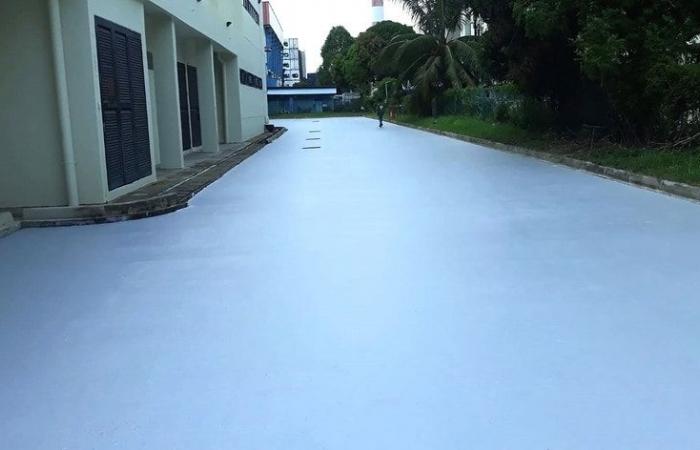It is the first study that analyzes the impact of using cold paint on a real scale and scenario and the experiment aims to reduce the absorption of heat by building materials and the subsequent release of heat into the urban environment..
Researchers at Nanyang Technological University (NTU) defined two areas of the city of Singapore for analysis.
The team selected four rectangular buildings that created two parallel blocks of narrow streets lined with buildings and coated the roofs, walls and street pavements of half of this industrial area with cool paint, leaving the adjacent area uncoated.
Using environmental sensors, scientists monitored air movement, surface and air temperature, humidity and radiation over two months.
After comparing data from the two areas, they discovered that during a 24-hour cycle the area coated with the paint registered a reduction of up to 30 percent in the heat released by built surfaces, corresponding to 2º C cooler at the hottest time of the day, compared to the unpainted area.
Cold paint on the street pavement
Cool paint is a heat-reflecting technology for exterior building surfaces. This study makes it possible to translate the benefits into numbers, particularly in terms of increased sustainability and mitigation of the “urban heat island” effect.
Tests on the use of paint to cool the environment have already been carried out, but in a reduced model. The new experiment carried out in real urban space now provides more data on the effectiveness of the coating, especially in city centers.
Containing additives that reflect the sun’s heat, the paint managed to reduce the absorption and emission of surface heat.
Cool painted roofs reflected 50 percent more sunlight and, as a result, absorbed 40 percent less heat, during the hottest period of a sunny day, compared to conventional roofs.
In youIn terms of the street environment, the pedestrian area cooled by around 1.5º C.
Laying the roof covering for the experiment | NTU Singapore
Co-author Bing Feng from the NTU School of MAE concludes that “the study showed that cool paint coating on the road significantly helped reduce the hottest temperatures on the painted block, confirming that cool paint coating may be a promising way to make urban areas cooler and more comfortable, especially during hot weather.”
The level of thermal comfort was measured using the Universal Thermal Climate Index – an indicator of the human sensation of outdoor temperature that takes into account temperature, relative humidity, thermal radiation and wind speed.
“Our study provides evidence that cold paint coatings reduce heat accumulation and contribute to cooling the urban environment”says the study’s lead author, Kiran Kumar Donthu.
Therefore, researchers believe that cities looking for a quick and inexpensive way to combat the devastating effects of heat waves will be able to turn to cold paint.
Urban refrigeration
“This is a minimally intrusive solution for urban cooling that has an immediate effectcompared to other options that often require major urban remodeling to be implemented”, highlights Donthu.
By decreasing the amount of heat absorbed in building materials, it can also make buildings cooler and reduce the use of air conditioning, he adds.
“With global warming, people will increasingly look for ways to stay cool,” notes researcher Wan Man Pun, from NTU’s School of Mechanical and Aerospace Engineering (MAE).
Man Pun argues that “the study’s findings are not only relevant to cities in Singapore, where it is hot all year round, but also to other urban areas around the world.”
And he highlights:“Our study validates how cool paint coatings can be a strategy to reduce the urban heat island effect in the future”.
“We hope the findings from our study will encourage more urban administrators to adopt cool paint coatings on built surfaces on a larger scale,” says Feng.
The investigation, conducted last summer, was published in the journal Sustainable Cities and Society but studies on the use of exterior paint continue. They will now focus on understanding how and how long the cold paint coating remains in the area intervened for the experiment.
Tags: Environment cooled degrees Study evaluates exterior paint combating urban heat
--





